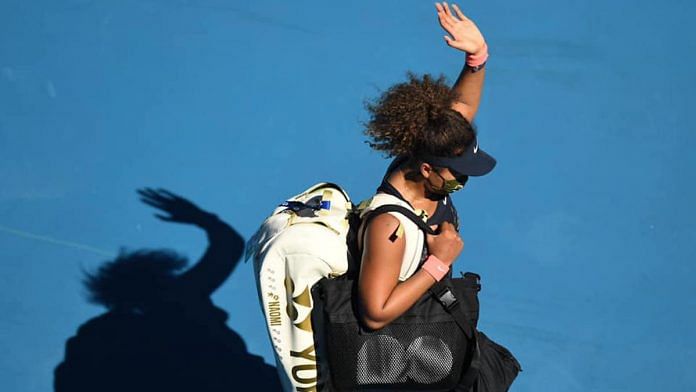French Open is one of those grand slams where many viewers miss the first few matches because no one knows when it has started. Not this year. All eyes were on the tournament, also known as Roland Garros, before it even started. A few days before the second Grand Slam of the year began, Naomi Osaka, world number two and highest-paid female tennis player, announced that she will not be doing any post-match interview due to her mental health. As usual, the internet had many opinions, and some even called the Japanese tennis star ‘bratty’.
The situation escalated quickly when despite winning her first round match, Osaka pulled out of the tournament when threatened with expulsion for not participating in the post-match press conference and fined $15,000. She revealed in a public letter that she has been suffering from depression since the 2018 US Open, which was also the first Grand Slam she won.
The Naomi Osaka incident was a fine opportunity for the tennis world to show everyone how it has evolved over the years, yet it missed the ball. A sport is not only of associations, but also athletes and the press. Anyone connected to tennis knows that mental conditioning is an essential aspect of the sport and truly sets apart a champion from a good player. Almost everyone in the top 100 is at par with each other technique-wise, yet it is one’s mental conditioning that determines who wins a Grand Slam and who breaks into the top 10. A player like Marat Safin, despite all his strength and amazing game, could never reach Roger Federer’s level.
With such high stakes, mental health is important. The tennis world missed the opportunity to be more inclusive and kinder. And now, at the very least, everyone associated with the sport needs to introspect and rethink the rules. Naomi Osaka deserved better — the ball is now in tennis’ court.
Also read: Serena Williams is a black woman throwing a tantrum – and yes, she can be both
A serious re-think
Do post-match press interviews matter? While some players handle it effortlessly and can answer questions regardless of the match result, there are many for whom it is extremely difficult and causes anxiety. Judy Murray, Andy Murray’s mother, said her son was intimidated by interviews and would get anxious as a teenager.
“Almost all of those [athletes] who had struggled with depression or anxiety said it was brought on by being thrown into the spotlight when they reached the top,” she wrote.
Doing away with interviews entirely is not the solution. To say that reporters are now less relevant because players have social media platforms to forge a personal connect with their fans is also a faulty argument. Tennis players do not train to face the press, but as you become more successful, you become a brand by yourself. And as a celebrity, you would be questioned. Post-match interviews are where reporters can question players and hold them accountable. Serena Williams should be asked whether she was being coached during a match, ironically, against Osaka; David Nalbandian should be questioned on whether he kicked a linesman; and Alexander Zverev must be questioned about the domestic violence allegations against him. Sports journalism, with all its finer details about the games as well as players’ lives on and off the field shaping their performances, have made following any sport that much simpler and engaging.
But an interview after every match is not required.
A key aspect of what everyone conveniently overlooked is Osaka’s mental health. A sportsperson depends on her physicality, agility and strength, but that is only held together through mental conditioning. Just in the past year, athletes have gone on record to state their struggles with mental health. For a prestigious tournament like Roland Garros to not make room for an athlete dealing with mental health issues and then threaten her with expulsion is downright disappointing. The world of sports can’t be celebrating players speaking up about their struggles with mental health and also punishing them when they take timely measures to deal with it.
This was a chance for a young girl sitting in some part of the world dealing with a mental health condition to feel that the world will make room for her. The tennis world has failed that little girl.
Also read: Hanuma Vihari to Sunil Chhetri — Indian sportspersons are finally showing up during crisis
Can’t not speak about gender
While we are talking about introspection, the press needs to rethink as well. Tennis reporters are mostly white and men. You cannot not speak about gender when it comes to their questions. Even though tennis is among the few sports where women have just as much visibility as men, they still are not taken seriously. .
After a 2015 Australian Open match, Eugenie Bouchard was asked to twirl and show her outfit by the commentator. At a 2019 Wimbledon press conference, Johanna Konta told a reporter who had questioned how seriously she was taking the sport, “don’t patronise me, I am a professional tennis player.” Andy Murray, on multiple occasions, has called out the sexism of reporters. And no discussion on gender and tennis will ever be complete without a discussion on the way Serena Williams, despite all her athleticism and brilliance, is spoken about.
In 2006, Matthew Norman wrote in The Telegraph, “Generally, I’m all for chunky sports stars… but tennis requires a mobility Serena cannot hope to achieve while lugging around breasts that are registered to vote in a different US state from the rest of her.”
The difference between questioning athletes and downright bullying is a question reporters need to ask themselves.
Tennis has moved on from wooden to metal rackets. It’s time to move forward in other aspects of the sport as well. A good place to start would be to not consider it as an excuse when an athlete speaks up about mental health.
Views are personal.



